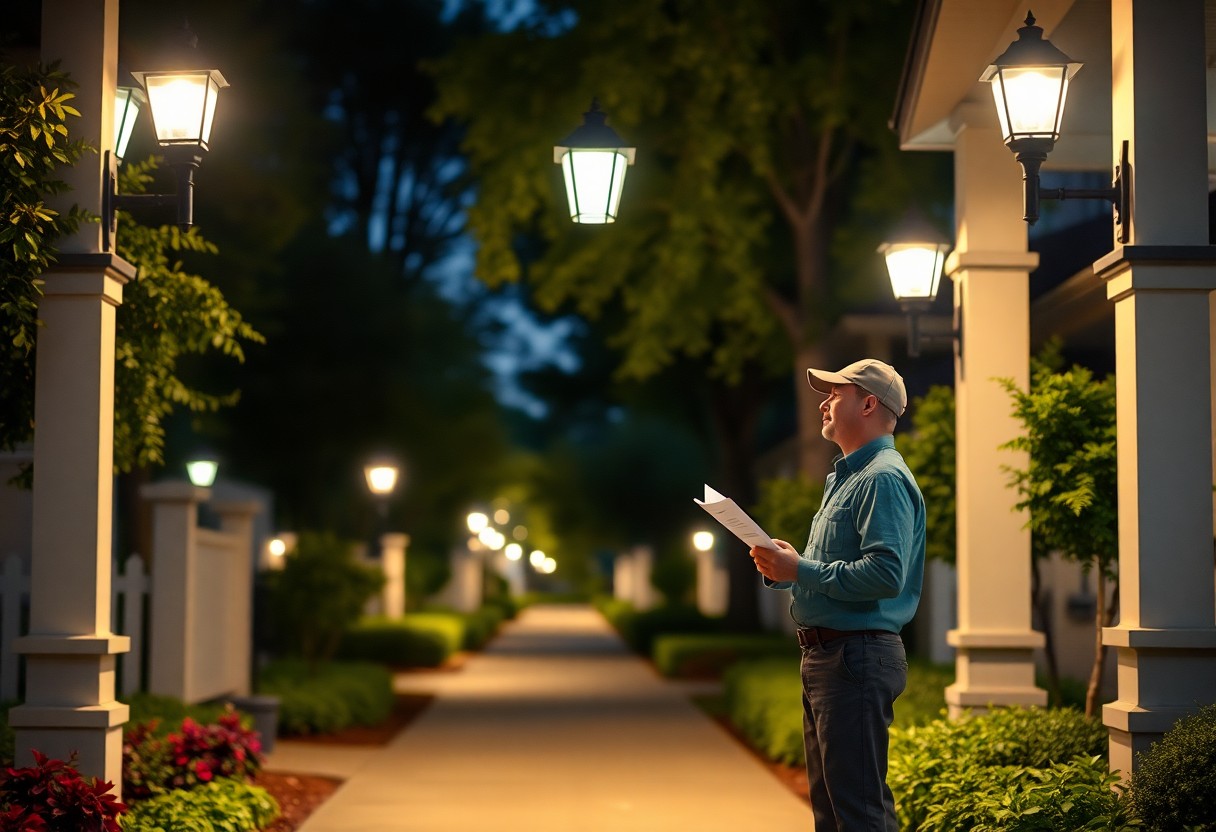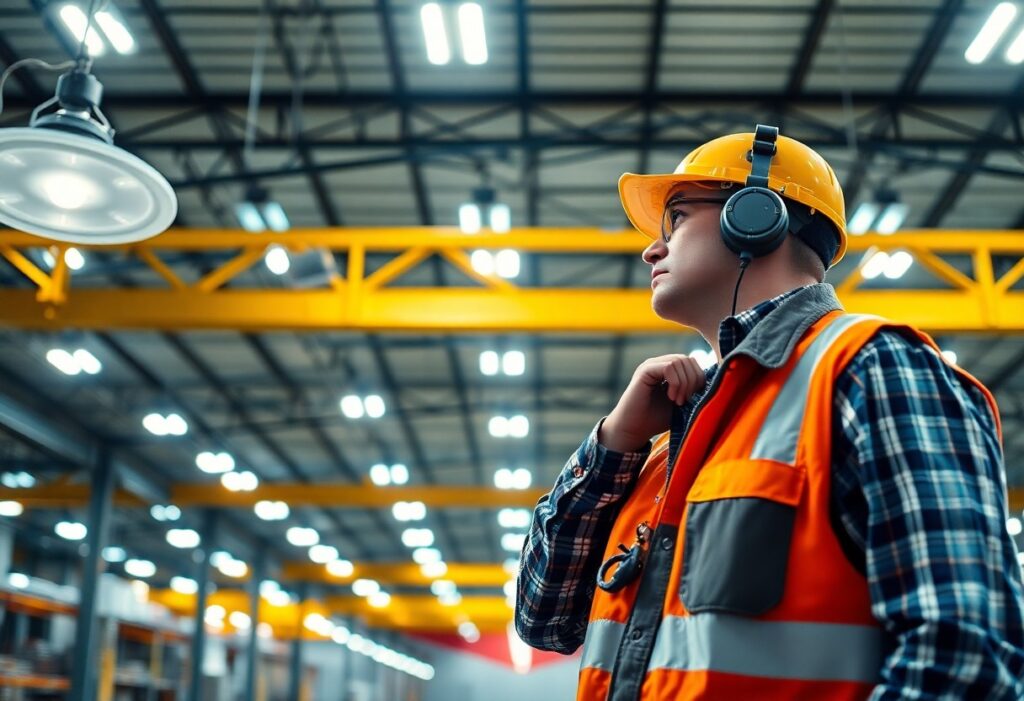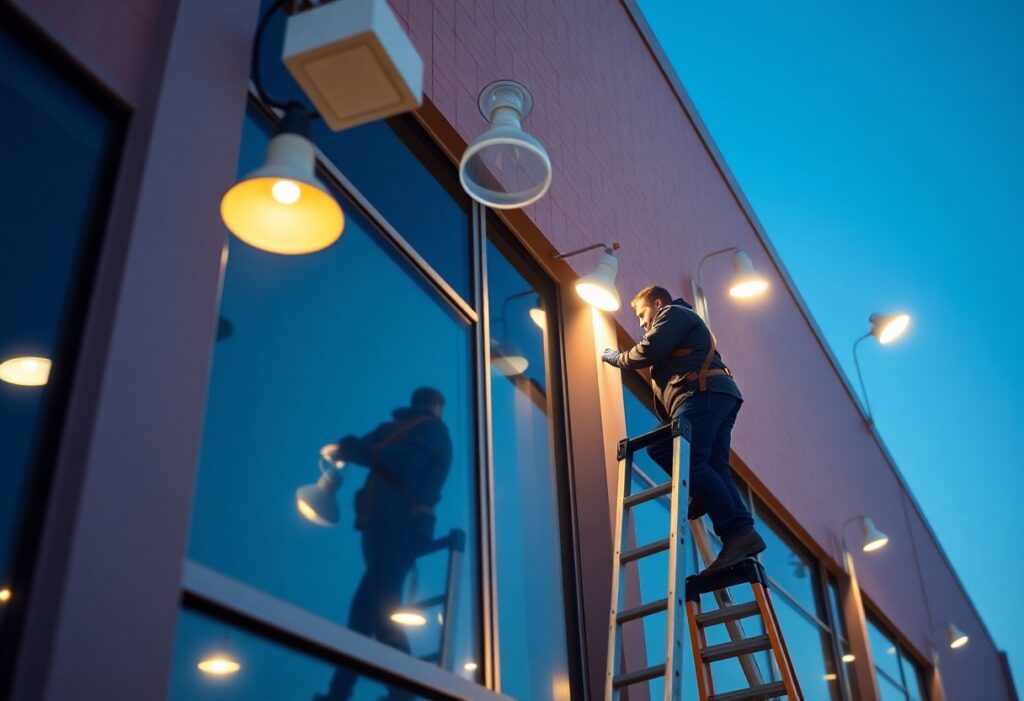You might think that lighting maintenance for your HOA is straightforward, but many committees overlook critical factors that can lead to ongoing issues and unnecessary expenses. Understanding common pitfalls is imperative to ensuring your community remains well-lit, safe, and welcoming. In this guide, you’ll discover frequent mistakes made during lighting maintenance and practical strategies to avoid them, enhancing your HOA’s overall functionality and aesthetics. Let’s dive in and empower you to take charge of your community’s lighting maintenance effectively.
Key Takeaways:
- Regular inspections of lighting fixtures can prevent unexpected outages and extend the lifespan of the equipment.
- Establishing a maintenance schedule helps in addressing minor issues before they escalate into costly repairs.
- Involving the community in the maintenance process can enhance communication and ensure that lighting needs are adequately addressed.

Understanding the Importance of Proper Lighting Maintenance
While lighting plays a vital role in enhancing security, aesthetics, and overall functionality in your community, it often gets overlooked when it comes to maintenance. Proper lighting maintenance helps prevent costly repairs and ensures that your community remains a welcoming and safe environment for all residents. For insights into the Top Spring HOA Maintenance Services Your Community Needs, consider how crucial effective lighting management is for long-term satisfaction.
How to Assess Lighting Needs for Community Spaces
Understanding your community’s lighting needs involves evaluating the current conditions and identifying areas that require better illumination. Start by gathering feedback from residents about specific concerns related to visibility and safety in communal areas. Assess high-traffic zones, pathways, and recreation areas during twilight or nighttime to gauge lighting adequacy.
Tips for Regular Lighting Inspections
The importance of regular lighting inspections cannot be overstated when it comes to maintaining an inviting community. Carry out inspections quarterly or biannually to identify signs of malfunction or wear and tear. This proactive approach ensures that malfunctioning lights are repaired promptly, preventing safety hazards for residents.
- Establish a checklist for inspection tasks.
- Document observations for follow-up actions.
- Involve residents in reporting issues.
- Ensure effective communication with your maintenance team.
Knowing when inspections occur helps maintain a safe and well-lit environment.
Regular inspections not only ensure that your community is well-lit, but they also foster a sense of pride among residents. Staying consistent can maximize the longevity of your lighting systems.
- Pay attention to bulb brightness and beam angles.
- Assess the cleanliness of fixtures and lenses.
- Look for signs of damage or wear.
- Update lighting plans as community needs change.
Knowing how often to evaluate your lighting systems is important for their performance.
Factors Influencing Effective Lighting Maintenance
Inspections play a significant role in understanding various factors that influence effective lighting maintenance. These include the age of the lighting infrastructure, weather conditions, and community layout. Recognizing and addressing these elements will lead to more efficient maintenance plans.
- Consider the energy efficiency of current lighting.
- Evaluate environmental effects like corrosion.
- Assess community layout for optimal light placement.
- Track usage patterns to optimize maintenance scheduling.
Thou should pay attention to these factors to enhance maintenance efficiency.
Analysis of these factors allows you to make informed decisions regarding upgrades and optimizing existing assets. Focusing on these considerations will ensure your community remains safe and welcoming.
- Balancing costs with efficiency is key.
- Stay informed about emerging lighting technologies.
- Engage with local experts for tailored solutions.
- Foster collaboration with residents for feedback.
Thou will appreciate the positive impact of effective maintenance on your community’s appeal.
Common Mistakes in Lighting Maintenance
Any HOA can encounter pitfalls in lighting maintenance that can lead to safety issues and increased costs. It is important to understand these common mistakes so you can avoid them. For instance, some associations might ask themselves, Is it right for homeowners associations to regulate how long… holiday lights can be displayed, which reveals a lack of proper guidelines. Being proactive will help ensure your community remains well-lit and safe.
How to Identify Overlooked Areas
Some areas within your residential community may often be overlooked during lighting maintenance checks. Conduct periodic surveys of the premises to locate dark spots or inadequately lit pathways. These areas may include:
- Park benches and picnic areas
- Entry and exit points
- Stairwells and ramps
- Parking lots and garages
By systematically evaluating these overlooked spaces, you will improve the safety and aesthetic appeal of your community.
Tips for Avoiding Inadequate Light Levels
Clearly, inadequate light levels can lead to unsafe conditions in your community. To avoid this, consider the following:
- Regularly assess brightness in common areas
- Upgrade to energy-efficient lighting, ensuring adequate lumens
- Replace burnt-out bulbs immediately
- Make sure illumination levels meet local safety guidelines
By addressing these aspects, you’ll establish a safer environment for your residents. Effective lighting not only enhances security but also promotes community engagement.
Factors Contributing to Common Maintenance Oversights
How to manage lighting maintenance effectively may seem overwhelming, but ignoring specific factors can lead to oversights. Here are some contributors to inadequate maintenance:
- Lack of scheduled inspections
- Poor communication among HOA members
- Inadequate budget allocation for maintenance
- Failure to adapt to technological advancements
Addressing these issues can enhance your overall maintenance strategy. By fostering communication and planning, you will address maintenance needs proactively.
Identify pathways for improvement by focusing on these key areas. Increasing awareness can help ensure no maintenance tasks are neglected. Strategies for successful maintenance include:
- Establishing a dedicated team for inspections
- Implementing checklists for regular assessments
- Allocating funds specifically for lighting maintenance
- Staying updated on the latest lighting solutions
Knowing these factors will empower you to maintain lighting effectively in your community, providing a safer and more inviting atmosphere for all residents.
Developing a Lighting Maintenance Strategy
Unlike many aspects of property management, proper lighting maintenance requires strategic planning to ensure effective and efficient operations. An organized approach will help you minimize costs while keeping your community safe and appealing.
How to Create a Comprehensive Lighting Plan
Plan to assess your lighting needs thoroughly. Begin by cataloging all existing lighting fixtures, including their locations and usage frequency. Identify any areas that may require additional lighting or upgrades, ensuring your plan addresses safety, aesthetics, and energy efficiency.
Tips for Scheduling Regular Maintenance Activities
Maintenance should be scheduled consistently to maximize the lifespan of your lighting systems. To facilitate this, create a maintenance calendar that includes:
- Frequency of bulb replacements
- Regular inspections of fixtures
- Cleaning schedules to remove dust and debris
- Seasonal checks before winter and summer
Thou must ensure that all stakeholders are informed of the schedule to ensure smooth operations and timely maintenance.
Scheduling regular maintenance activities will help you identify and address potential issues before they escalate into costly repairs. You should also consider involving your community members to keep them aware and engaged with the maintenance process. Hence, your schedule can include:
- Community notifications concerning maintenance days
- Feedback channels for residents to report issues
- A system for documenting maintenance history
Thou should implement these strategies to enhance overall satisfaction and safety within your community.
Factors to Consider When Allocating Budget for Lighting
If you want to allocate your budget effectively for lighting maintenance, consider several factors. Evaluate the type of fixtures you have, their age, and the energy costs associated with them. This will help you make informed decisions on repairs or replacements needed.
To enhance your budget allocation process, you should focus on prioritizing the most critical maintenance aspects. Additionally, consider planning for unexpected repairs by setting aside a portion of your budget for unexpected expenses related to lighting. Key considerations include:
- Initial installation and replacement costs
- Ongoing energy expenses
- Projected lifespan of fixtures
- Cost of labor for maintenance professionals
After reviewing these factors, you may streamline costs and ensure your community’s lighting remains effective.
Budgeting effectively for lighting maintenance not only saves you money but also ensures the safety and attractiveness of your community. You should continuously assess these factors for the most efficient use of your resources. Key factors to consider might be:
- Incorporating energy-saving technologies
- Obsolete fixture replacements
- External consultancy costs
- Emergency repair funds
After careful consideration, this approach will enable you to develop a lighting maintenance strategy that supports both your community’s needs and your financial goals.
Selecting the Right Lighting Fixtures
For homeowners’ associations (HOAs), selecting the right lighting fixtures involves careful consideration of various factors to ensure optimal performance and aesthetics. A well-planned lighting strategy enhances safety, promotes community engagement, and improves the overall property appeal.
How-to Evaluate Options for Energy Efficiency
Efficiency is necessary when selecting lighting fixtures. Begin by exploring LED options, which consume significantly less power compared to traditional incandescent bulbs. Look for fixtures with high lumens per watt ratings and Energy Star certifications. These indicators provide insight into how effectively a fixture converts energy into light, allowing you to make cost-effective choices and minimize long-term energy expenditures.
Tips for Choosing Durable Materials
Lighting materials play a significant role in the lifespan of fixtures. When making your selection, consider options that resist corrosion, fading, and impact damage. Look for fixtures made from high-quality metals or durable plastics. Here are some materials to consider:
- Aluminum with a powder coat finish
- Stainless steel components
- Polycarbonate lenses
The longevity of your lighting fixtures can be greatly enhanced by choosing materials that withstand varying weather conditions and wear.
Factors Impacting Fixture Longevity
It’s vital to consider the conditions your lighting fixtures will face. Environmental factors such as humidity, temperature fluctuations, and exposure to UV rays can affect longevity. Additionally, improper installation, lack of maintenance, and heavy usage can shorten the lifespan of fixtures. Keep these factors in mind:
- Location and climate
- Installation quality
- Usage frequency
Assume that understanding these elements will help you make informed decisions for your fixtures, maximizing your investment.
Factors Impacting Fixture Longevity
Energy efficiency also ties into fixture longevity. Selecting LED fixtures not only reduces energy costs but also contributes to a longer lifespan compared to traditional bulbs. The heat produced by some lighting options can decrease their durability, making LED a better choice for extended use. Here are additional considerations:
- Heat dissipation mechanisms
- Wattage levels
- Recommended usage hours
Assume that prioritizing energy-efficient lighting can enhance both the performance and durability of your fixtures, saving you time and money in the long run.
Durable lighting fixtures are a significant investment for HOA communities, as they impact safety and beauty. Selecting the right materials and technology can significantly boost the longevity and functionality of your fixtures. Ensure you pick options that can withstand environmental challenges and provide enduring performance. Consider these tips:
- Select fixtures with weather-resistant features
- Choose brands with a reputation for quality
- Invest in warranties that cover up to several years
The effort you put into making informed choices will greatly benefit your community over time.
Contractor Engagement and Management
Keep your HOA’s lighting in top shape by engaging and managing contractors efficiently. Poor maintenance can lead to various risks and liabilities, as detailed in The Cost of Poor Lighting Maintenance: Risks, Liabilities …. Selecting the right contractors is necessary for maintaining safety and aesthetic standards within your community.
How to Find Reputable Lighting Maintenance Services
To find reputable lighting maintenance services, start by researching local contractors with proven track records. Look for online reviews, ask for recommendations from other HOAs, and check their licensing and insurance to ensure they meet industry standards.
Tips for Effective Communication with Contractors
If you want to ensure that your project runs smoothly, effective communication with your contractors is key. Establish clear expectations from the outset to prevent misunderstandings and wasted time. Here are some tips:
- Establish a primary point of contact.
- Communicate your project goals and preferred timelines clearly.
- Check in regularly for updates and progress reports.
- Encourage feedback and input from contractors.
- Recognizing the importance of transparency can help foster a strong working relationship.
With consistent communication, you can mitigate issues before they arise. Open dialogue allows both you and the contractor to express concerns and expectations, leading to a more efficient partnership.
- Share any specific requirements or preferences upfront.
- Be responsive to queries and requests for information.
- Document discussions for future reference.
- Recognizing the benefits of open lines of communication is vital for project success.
Factors to Consider When Reviewing Contractor Proposals
The contractor proposals you receive should be assessed on several key factors to ensure you get the best value for your investment. Consider the scope of work, materials proposed, estimated timelines, and cost breakdowns. Examine each proposal carefully.
- Look for clarity in project scope and deliverables.
- Compare the quoted prices against your budget.
- Check for warranties and after-service guarantees.
- The best proposals will clearly align with your HOA’s goals and financial expectations.
Thoroughly evaluating each proposal can save you headaches down the line. Confirm that the contractor offers thorough explanations for their cost estimates and timelines, ensuring they are realistic and attainable.
- Request references and past project examples.
- Investigate if they have the necessary equipment and resources.
- Ensure compatibility with your HOA’s long-term goals.
- The thoroughness of your review will set the stage for a successful partnership.
Tips for evaluating all proposals include creating a comparison chart, prioritizing necessary elements that matter to your community, and seeking input from other board members for a well-rounded perspective.
Community Involvement in Lighting Decisions
Now, engaging your community in lighting decisions is necessary for ensuring that the lighting reflects the needs and desires of the residents. When residents feel included in the process, they are more likely to express satisfaction with the outcomes. Encouraging feedback can help illuminate the path toward effective lighting maintenance and improvement efforts.
How to Encourage Resident Feedback
Even small adjustments can lead to significant improvements in resident feedback. Create a dedicated channel for residents to express their thoughts, such as surveys, suggestion boxes, or community meetings. This not only provides spaces for feedback but also reinforces a sense of community ownership over the lighting decisions.
Tips for Involving Residents in Lighting Maintenance Initiatives
Lighting maintenance initiatives can benefit greatly from active resident involvement. Consider the following strategies to enhance participation:
- Host community forums to discuss lighting issues.
- Leverage social media platforms for informal polls and discussions.
- Offer incentives for participation, such as community recognition or small rewards.
Perceiving the value of collective input can significantly enrich the lighting decision-making process.
Factors Affecting Community Engagement
You may find various factors influencing how your community engages with lighting decisions. Identifying these factors can help you create a more welcoming environment for participation:
- Current resident satisfaction with existing lighting.
- Availability of communication channels.
- Openness to new ideas and suggestions.
Perceiving the nuances of these factors plays a key role in fostering a strong engagement framework.
By understanding the underlying factors affecting community engagement, you can tailor your approach to meet the needs of your residents more effectively. A few areas to explore include:
- Assessing the demographics and preferences of your community.
- Recognizing seasonal or situational changes that may impact involvement.
- Spotlighting positive examples of community-led initiatives.
Perceiving how these elements interact can help you enhance communication and collaboration within your community.
Tips for Enhancing Community Engagement in Lighting Initiatives
Your efforts to involve the community in lighting decisions will yield better outcomes when approached thoughtfully. Start by encouraging open dialogue and consider hosting regular information sessions. Share important updates and decision-making processes so residents remain informed and engaged. Utilize digital tools for transparency, such as newsletters or online forums. Collaboration is key, so actively look for ways to engage in joint decision-making. Residents who feel included are more likely to support and participate in maintenance initiatives.
Final Words
To wrap up, effective lighting maintenance for your HOA is vital for safety and aesthetics. By avoiding common mistakes like neglecting regular inspections or miscalculating energy needs, you can enhance the longevity of your lighting systems. Always opt for professional assessments, prioritize energy-efficient options, and ensure all residents are informed about maintenance schedules. By taking these steps, you not only improve your community’s visual appeal but also foster a safer environment for everyone involved.
Q: What are the most common mistakes HOAs make regarding lighting maintenance?
A: One of the most frequent mistakes is neglecting regular inspections of lighting fixtures. This can lead to malfunctioning lights that may pose safety hazards. Another common oversight is failing to update or replace outdated lighting systems, which can result in increased energy costs. Additionally, not establishing a comprehensive maintenance schedule can lead to inconsistent lighting quality in common areas.
Q: How can HOAs ensure that their lighting maintenance is effective?
A: To ensure effective lighting maintenance, HOAs should create and adhere to a detailed maintenance schedule that includes regular inspections, cleaning, and bulb replacements. Engaging with a professional lighting contractor can also provide expert insights on best practices. Furthermore, documenting past maintenance activities can help in identifying patterns and areas that require more attention, ensuring that lighting remains functional and safe.
Q: What are the benefits of proactive lighting maintenance for HOAs?
A: Proactive lighting maintenance provides several benefits for HOAs, including improved safety for residents, enhanced aesthetic appeal in common areas, and reduced energy costs through the use of energy-efficient lighting solutions. Additionally, regular maintenance can extend the lifespan of lighting fixtures, ultimately saving money on replacements. A well-lit community can also positively impact property values and resident satisfaction.



